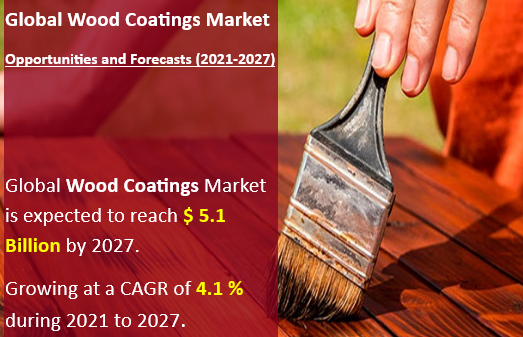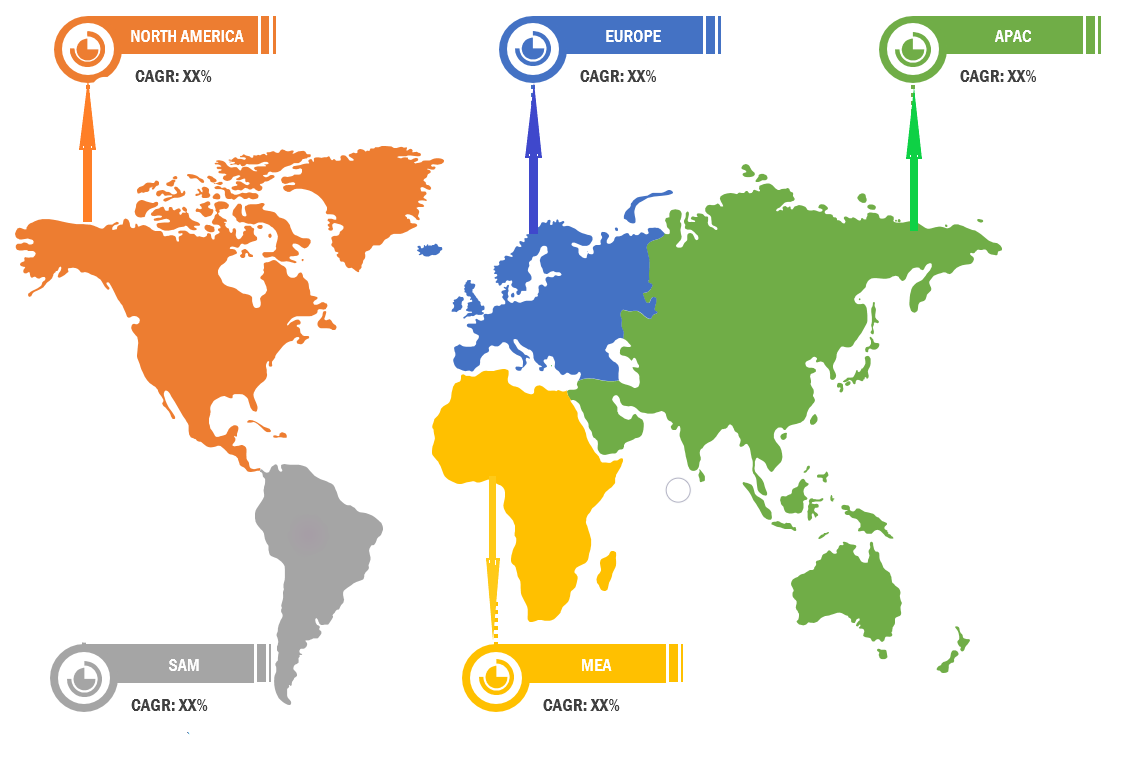Global Wood Coating Market – Overview
- The report will cover the overall analysis and insights in relation to the size and growth rate of the “Global wood Coating Market ” by various segments at a global and regional level for the 2014-2027 period, with 2014-2019 as historical data, 2020 as a base year, 2021 as an estimated year and 2021-2027 as forecast period.
Global Wood Coating Market – Introduction
- Wood coating’s basic function is to protect the surface of the substrate and to preserve its qualities, looks against the environment, daily wear and tear, and natural decay. It is also employed to enhance the appearance of the substrate. There are different techniques of its application such as rolling, spraying, dipping, curtain coating, brushing, manual application and etc. Product used for coating is wax, shellac, nitrocellulose lacquer, conversion varnish, polyurethane varnish, water-based polyurethane, and oil wood finishes.
- The coating protects the wood against UV exposure, daily use, and handling or damaging. Wood coating resins for outdoor use offer both high gloss and matte finishes and can also be pigmented to offer color options. Based on the resin type, the market is classified into Acrylic, Nitrocellulose, Polyester, Polyurethane, and Others. Based on the application, the market is bifurcated into Water-borne, Solvent-borne, and UV-cured. Various applications of word coatings are Furniture & Fixture, Doors & Windows, Cabinet, and Other.
Global wood Coating Market Report Scope
- The scope of the report covers the clear understanding and overview of the product.
- Analysis of market trends in the region, with market data considering 2020 as the base year, 2021 as the estimate year and forecast for 2027 with projection of CAGR from 2021 to 2027.
- The Global wood Coating Market report covers discussion of economic trends and technology.
- Global wood Coating Market estimates represent revenue.
- In-depth analysis of the market segmentation assists in determining the prevailing market scope.
| Attribute | Details |
|---|---|
| Market size available for years | 2014–2027 |
| Base year considered | 2020 |
| Forecast period | 2021–2027 |
| Historical period | 2014-2019 |
| Forecast units | Value (USD) & Volume (Million Units) |
| Forecast units | Value (USD) & Volume (Million Units) |
| Segmentation | By Regions North America, Europe, Asia Pacific, Latin America and Middle East & Africa |
| By Countries United States, Russia, China, Germany, United Kingdom, France, Japan, Israel, Saudi Arabia, South Korea, United Arab Emirates, Canada, Indonesia, Malaysia, Switzerland, Australia, India, Italy, Sweden, Spain, Belgium, Netherlands, Norway, Brazil, Argentina, Mexico, South Africa and 54 Others. |
|
| By Coating Type Stains & varnishes, Shellac coating, Wood preservatives, Water repellents and Other. |
|
| By Technology Waterborne, Conventional Solid Solvent Borne, High Solid Solvent Borne, Powder Coating, Radiation Cured and Other. |
|
| By Application Method Roll coating & brush coating, Vacuum coating, Spray coating and Others. |
|
| By End-User
Furniture, Cabinets, Siding, Flooring & decking and Others. |
|
| Companies covered | Arkema SA; Ashland Inc.; Asian Paints; Akzonobel N.V.; Axalta Coatings Systems; BASF SE; DSM; Eastman Chemical; Evonik Company; Hempel A/S; ICI Paints; IVM Group; Kansai Paint Co., Ltd.; Nippon Paint Co. Ltd.; PPG Industries Inc.; RPM International Inc.; Stahl Holdings; Teknos Group; The Dow Chemical Company; The Sherwin-Williams Company; The Valspar Corporation and Others. |
Segments Covered in Global Wood Coating Market
- The market has been segmented on the basis of application method, coating type, end-user, and regions in terms of value. The market segments by application method include roll coating & brush coating, vacuum coating, spray coating, and others. The market segments for coating type includes stains & varnishes, shellac, wood preservatives, water repellants, and others. The geographic segmentation includes market size and share of North America, Europe, Asia-Pacific, and RoW.
- This report provides a complete analysis of key companies and competitive analysis of developments recorded in the industry over the last five years. In the report, market drivers, restraints, opportunities, and challenges have been discussed in detail.
Covid-19 Impact on the Global Wood Coating Market
- COVID-19 is a new strain of corona-virus that has not been previously identified in humans. Corona-viruses (CoV) are a family of RNA (ribonucleic acid) viruses. COVID-19 started in Asia and is now spreading over the rest of the world via person-to-person contact and community spread. COVID-19 pandemic may have a potential impact on Global Market.
Recent Developments in Global Wood Coating Market
- February 2017, BASF SE, a Germany-based chemicals manufacturing company, launched new light stabilizers for wood and metal coatings. The products are from Tinuvin 29 and Tinuvin DW (N) range that will fulfill increasing demand for high-performance light stabilizers.
- May 2019, Ashland, Inc., a specialty chemicals company, launched Aquaflow NMS-460E rheology modifier, which is a high-performing, efficient synthetic thickener that is used in wood coatings.
- December 2018, Rust-Oleum, a subsidiary of RPM International, Inc. acquired Siamons International Inc., a provider of non-toxic specialty mold cleaners.
Key Market Players in Global Wood Coating Market
- The major players in the Global Wood Coating Market are Akzonobel N.V.; The Sherwin-Williams Company; BASF SE; Hempel A/S; The Valspar Corporation; The Dow Chemical Company; RPM International Inc.; Nippon Paint Co. Ltd.; Arkema SA; Ashland Inc.
- Also, the Global Wood Coating Market analysis report includes information on upcoming trends and challenges that will influence market growth. This is to help companies strategize and leverage all forthcoming growth opportunities.
Objectives of the Global Wood Coating Market Study
- To provide detailed information regarding drivers, restraints, opportunities and challenges are influencing the growth in the Global Wood Coating Market.
- To analyze the competitive intelligence of players based on company profiles and their key growth strategies.
- To strategically analyze micro markets with respect to the individual growth trends, their prospects, and their contribution to the total Global Wood Coating Market.
- To analyze competitive developments such as expansions, and product launches, along with research & development (R&D) activities undertaken in the Global Wood Coating Market.
- A unique model is created customized for each study also offers suggestions that help enterprises to identify and mitigate risks.
Note
- Global Industry Reports will also support you post-purchase for a period of 6 months to answer any of your queries related to the following market and to provide you any more data if you need, for your analysis.
- Also, you can buy some selected Chapters from the report.











